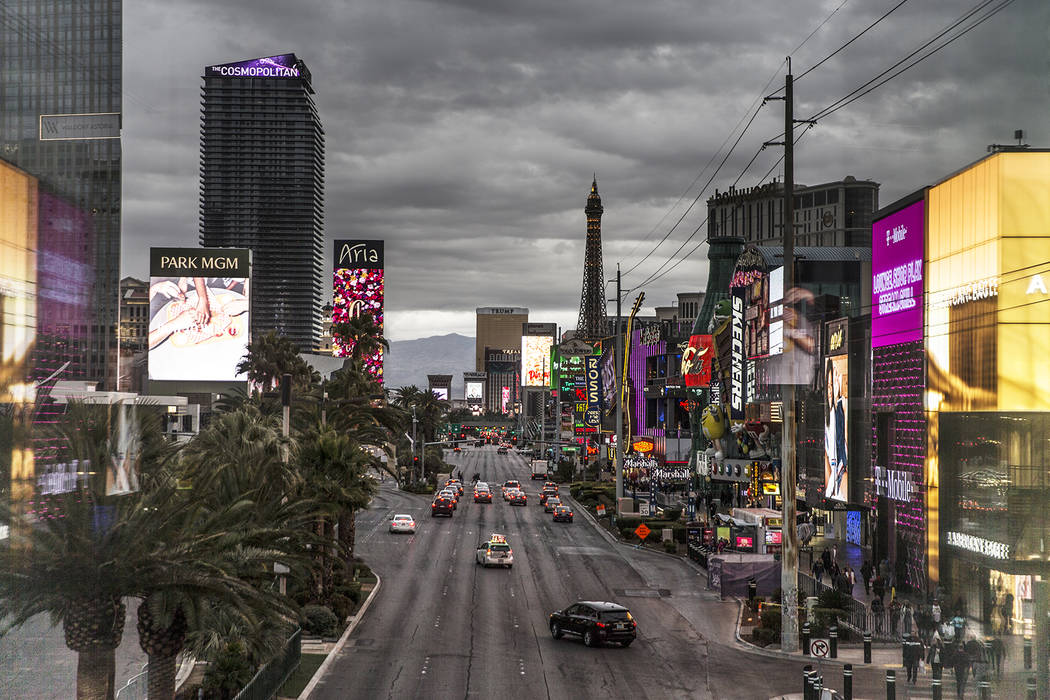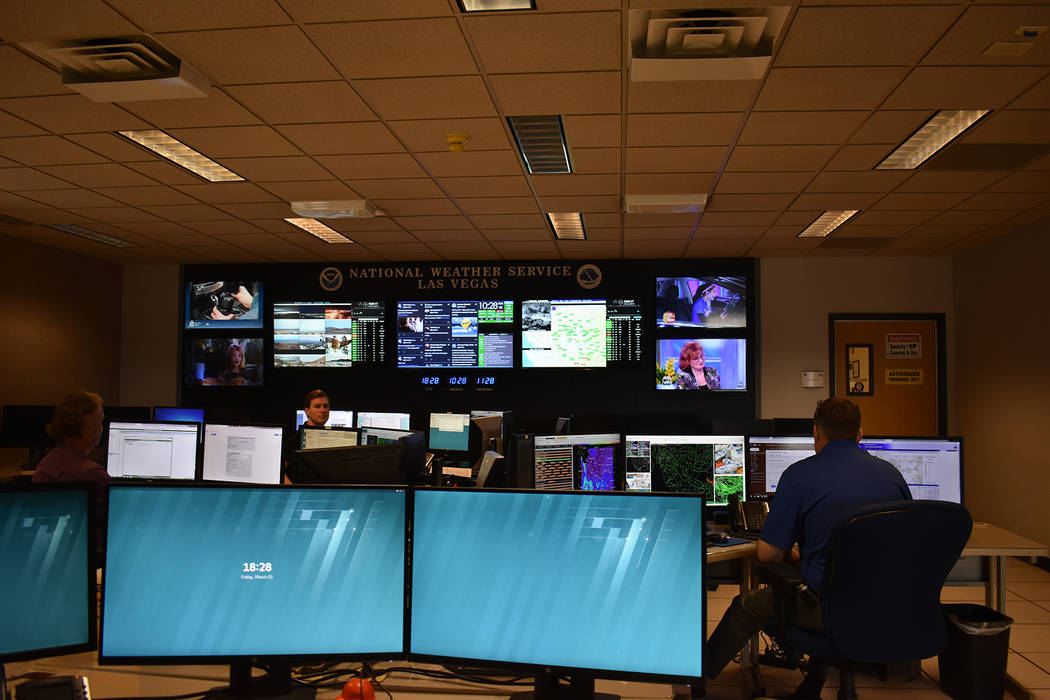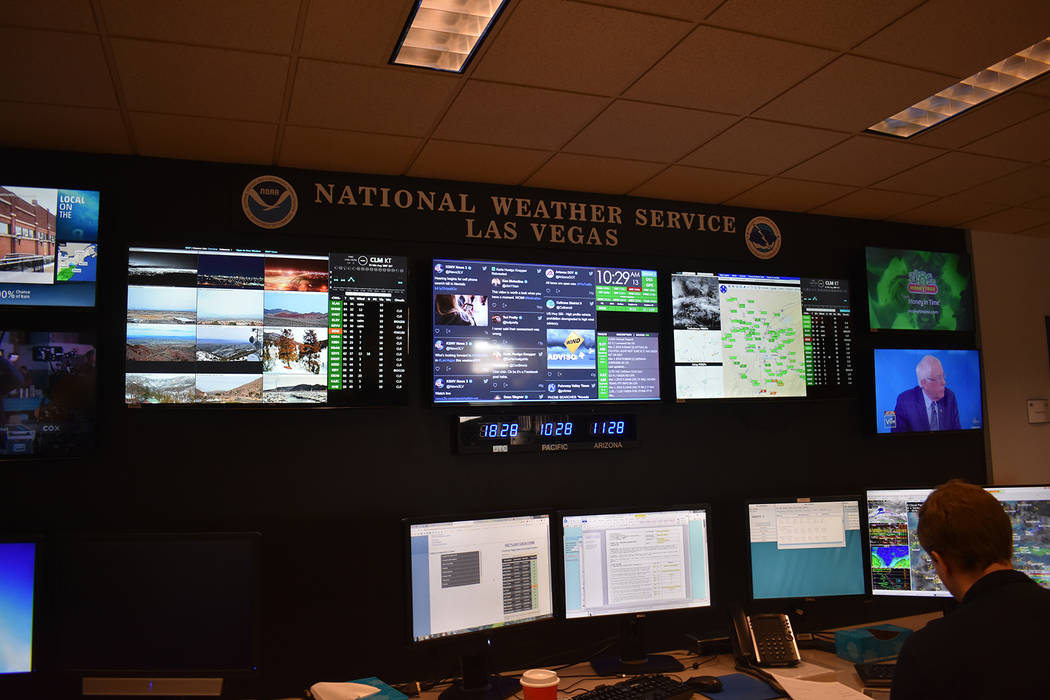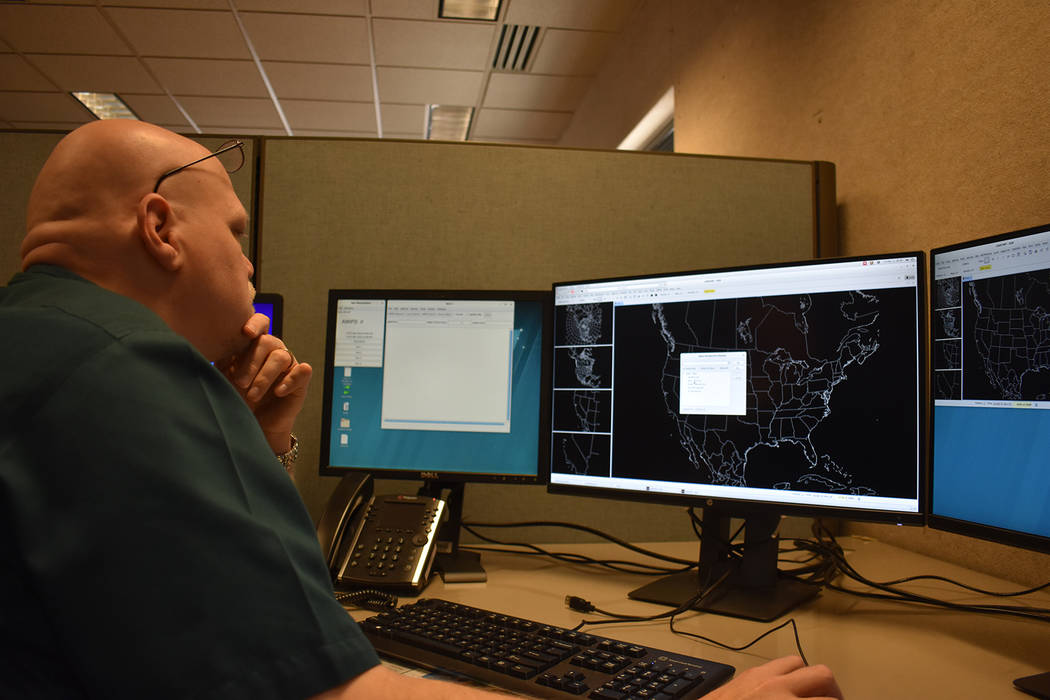Las Vegas National Weather Service’s territory Oklahoma-sized
The National Weather Service’s orange brick building stands with a few front windows, surrounded by open desert, office buildings and I-15. Inside are at least two meteorologists at any given time, forecasting the weather and updating alerts, McCarran International Airport and emergency personnel.
Daniel Berc, warning coordination meteorologist at the Las Vegas forecast office, said one of the station’s primary responsibilities is working with local emergency response teams. During the response to the Route 91 Harvest festival shooting, the station provided emergency management with weather forecasts throughout the night, Berc said.
“They are concerned with weather,” Berc said of police and other emergency management departments. “We provide weather forecasts on New Year’s Eve because wind is always a concern. If there are any incidents, they need to know how the weather will impact them.”
For example, Berc added, “If there is an incident with a chlorine leak, emergency response need to know where that chlorine gas is going to go; we can tell you that and they can evacuate those places.”
Official weather observations in the Las Vegas Valley began in 1937 at what is now the Nellis Air Force Base, according to a report compiled in 2009 from Chris Stachelski on the station’s history. The Las Vegas weather crew moved to an office at McCarran International Airport, then to the newly constructed weather service building in 1995.
McCarran now has an automated system that handles observations, Berc said.
Stachelski was a meteorologist in Las Vegas with the National Weather Service for nearly eight years. Before moving to the valley, he worked at the weather station in Hanford, California, about 40 miles south of Fresno.
Compared with other forecasting jobs he had, Stachelski said, Las Vegas wasn’t as busy with day-to-day “active weather,” leaving more time to conduct climate research.
Twice-daily balloon release
To help with forecasting, every day at 3 a.m. and 3 p.m. the station launches a weather balloon that feeds data to the station’s computers. The balloons provide snapshots of the atmosphere that tools on the ground can’t pick up. Berc said there are 92 other stations across the county that coordinate their launch times so every balloon launches at the same time.
The balloon rises over 100,000 feet — nearly 19 miles — and floats for about 90 minutes.
The station puts out two forecast packages a day that are sent to media organizations and published on social media and online. Those forecasts include temperature, wind speed, sky coverage and snow levels.
The station also provides McCarran and six other airports with forecasts every six hours and sends out warnings and advisories.
Near the back of the building are several workstations surrounding a “situational awareness board.” The right side of the board is for aviation purposes and gives information the airport needs, and the center of the board is the station’s social media feed. The board also has satellite images and wind observations.
On March 1, three meteorologists were at work. Barry Pierce and John Adair, senior meteorologists and longtime employees with the weather service in Las Vegas, were accompanied by Alex Boothe, who has worked at the station for about two years.
At their workstations, the meteorologists monitor satellite pictures that show where the moisture is in the atmosphere, if there are any weather disturbances and what the skies look like. Every time there is a change in the weather pattern, a meteorologist calls the airport so it can make adjustments such as which runways to use.
If forecasters were not able to work due to extreme weather or a concern with the building, another office would provide backup for the station temporarily, Berc said.
Berc, who is from the Midwest and later worked at the weather service station in Wyoming, has worked in Las Vegas for just over six years. He said friends and former colleagues often underestimate the work that goes on there.
“‘It must be pretty easy,’ they say; ‘You just press the hot button every day,’” Berc said.
His job is much more than that. He said the most dangerous weather conditions here are heat and flooding, which are plentiful in Southern Nevada.
“We almost have a more important role here than we have in other areas,” Berc said. “When we do have impactful weather, it tends to be more impactful here.”
Contact Rachel Spacek at 702-387-2921 or rspacek@reviewjournal.com. Follow @RachelSpacek on Twitter.
Vast territory
Only the Salt Lake City and Albuquerque, New Mexico, National Weather Service offices cover a larger area than Las Vegas' does, meteorologist Daniel Berc said. The Las Vegas office covers Clark, Lincoln, Nye and Esmeralda counties in Southern Nevada, Mohave County in Arizona, and Inyo and most of San Bernardino counties in California — approximately 70,000 square miles. That area is roughly the same size as Washington state, North Dakota, Oklahoma or Missouri.
More than 20 employees
The Las Vegas National Weather Service station employs 17 meteorologists, two electronics technicians, an electronic systems analyst, an information technology specialist and an administrative assistant. Employees were considered excepted and worked through the recent 35-day government shutdown, meteorologist Daniel Berc said.
Station location
The Las Vegas National Weather Service station is at 7851 S. Dean Martin Drive. Its double entrance doors are locked all day. The public isn't allowed to visit except via scheduled tours; those interested in tours may call 702-263-9744. A sign at the front of the building clearly reads "National Weather Service."


























